

EXPLORE BY TOPIC:
  Our top 10 resources
Our top 10 resources
  Childhood / Early Life
Childhood / Early Life
  Chronic Stress
Chronic Stress
  Education
Education
  Food Security
Food Security
  Genetics
Genetics
  Jobs & Work
Jobs & Work
  Housing / Neighborhoods
Housing / Neighborhoods
  Income & Wealth
Income & Wealth
  Race / Racism
Race / Racism
  Social Inclusion
Social Inclusion
  Policy & Change
Policy & Change





Buy the DVD
e-Newsletter
FAQs
Contact Us
Site Map
Home

|
 |


U.S. Health in International Perspectives: Shorter Lives, Poorer Health 
Institute of Medicine The United States is among the wealthiest nations in the world, but it is far from the healthiest. Although Americans’ life expectancy and health have improved over the past century, these gains have lagged behind those in other high-income countries. This health disadvantage prevails even though the United States spends far more per person on health care than any other nation. To gain a better understanding of this problem, the National Institutes of Health (NIH) asked the National Research Council and the Institute of Medicine to convene a panel of experts to investigate potential reasons for the U.S. health disadvantage and to assess its larger implications. The panel’s findings are detailed in its report, "U.S. Health in International Perspective: Shorter Lives, Poorer Health." |
 |
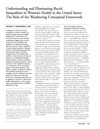 Understanding and Eliminating Racial Inequalities in Women's Health in the United States (pdf) Understanding and Eliminating Racial Inequalities in Women's Health in the United States (pdf) 
SCHOLARLY ARTICLE, Arline T. Geronimus, Journal of the American Medical Women's Association, 2001 Argues that "weathering" framework best describes complexities of inequality. Explains how this model suggests that African-American women experience early health deterioration as a consequence of the cumulative impact of repeater experience with social, economic, or political exclusion. This includes the physical cost of engaging actively to address structural barriers to achievement and well-being. |
 |
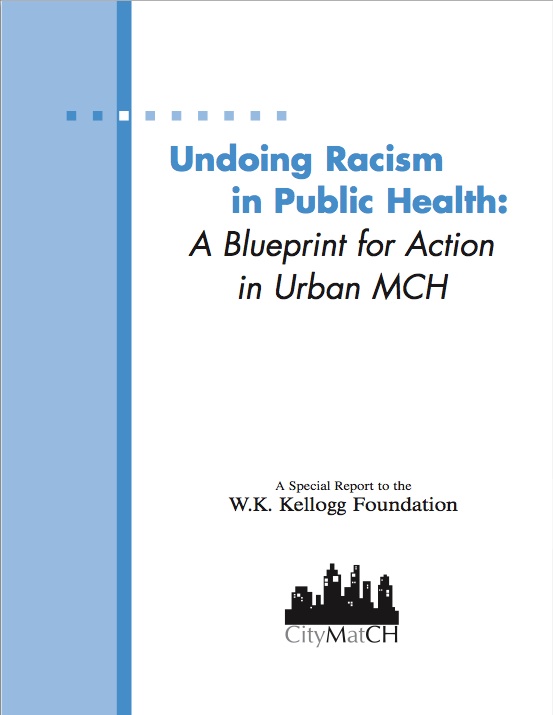 Undoing Racism in Public Health: A Blueprint for Action in Urban MCH Undoing Racism in Public Health: A Blueprint for Action in Urban MCH 
REPORT by CityMatCH, August 2004 Eliminating racial and ethnic disparities is a sustained, strategic priority in CityMatCH's work with nearly 150 member local health departments whose jurisdictions include the largest 200 cities and major metropolitan areas in the nation. taksim escort This report aims to examine the scientific basis for racism as a determinant of health status and health disparities, and institutional racism manifests in health care and health departments; provide an overview of existing directions, umraniye escort options and resources for "Undoing Racism;" and outline a series of activities for a local public health-based Undoing Racism initiative, ranging from awareness to action.
|
 |
 Undoing Racism: A Gardener's Tale Undoing Racism: A Gardener's Tale 
ARTICLE and VIDEO PRESENTATION by Camara Phyllis Jones In a 2002 videotaped interview for the CityMatCH Annual Urban MCH Leadership Conference, Dr. Jones shared a simple yet remarkably profound allegory she developed to help people come to a place of understanding about the many layers and nuances of institutionalized, personally-mediated, and internalized racism.
A family physician and epidemiologist by training, Dr. Jones' lifelong passion has been naming and addressing the impacts of racism on the health and wellbeing of the nation.
The page also include a link to her 2003 article using the same allegory, "Levels of Racism: A Theoretic Framework and a Gardener's Tale." |
 |
Unemployment is Hard on the Heart, and the Harm May Add Up 
In a study published in the Archives of Internal Medicine, researchers report that repeated job losses may be as damaging to the heart health as smoking, high blood pressure, or diabetes. Among Americans aged 50 to 75, the unemployed suffer heart attacks at a rate that is 35% higher than that among employed people with otherwise similar risk factors, and the rate seems to rise with every new period of unemployment. |
 |
 Unemployment May Be Hazardous to Your Health Unemployment May Be Hazardous to Your Health 
NEWS ARTICLE by Roni Caryn Rabin, New York Times, May 8, 2009 Even as the U.S. Labor Department released figures showing that the economy lost more than half a million jobs in April, researchers made public a large study with an unsettling finding: Losing your job may make you sick.
|
 |
 Unequal America: Causes and Consequences of the Wide- and Growing- Gap Between Rich and Poor Unequal America: Causes and Consequences of the Wide- and Growing- Gap Between Rich and Poor 
Disparities in health tend to fall along income lines everywhere: the poor generally get sicker and die sooner than the rich. But in the United States, the gap between the rich and the poor is far wider than in most other developed democracies, and it is getting wider. That is true both before and after taxes: the United States also does less than most other rich democracies to redistribute income from the rich to the poor.
Americans, on average, have a higher tolerance for income inequality than their European counterparts. American attitudes focus on equality of opportunity, while Europeans tend to see fairness in equal outcomes. Among Americans, differences of opinion about inequality can easily degenerate into partisan disputes over whether poor people deserve help and sympathy or should instead pull themselves up by their bootstraps. The study of inequality attempts to test inequality’s effects on society, and it is delivering findings that command both sides’ attention. |
 |
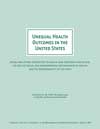 Unequal health outcomes in the United States (PDF) Unequal health outcomes in the United States (PDF) 
REPORT from the CERD Working Group on Health and Environmental Health, 2008 This report to the U.N. Committee on the Elimination of Racial Discrimination makes clear that racial discrimination in health care access and treatment is a human rights violation that deserves serious attention from both the CERD Committee and policymakers in the United States. This report was written by a coalition of experts in the fields of health policy and environmental justice, including academics and members of civil society organizations working to advance the right to health and the right to a healthy environment in the United States |
 |
 Unfair Treatment Can Harm the Heart Unfair Treatment Can Harm the Heart 
NEWS ARTICLE, HealthDay News, May 2007 Researchers at University College London analyzed responses from a few thousand senior civil servants working for the British government in London, gathered over 11 years. The findings indicate that a nagging sense of being unfairly treated at work or at home can raise a person's risk of heart attack. The study was published in the British Medical Journal.
|
 |
 Urban Settings (pdf) Urban Settings (pdf) 
REPORT from the WHO Commission on the Social Determinants of Health, 2007
Focuses on urbanizations, particularly broad policy interventions related to healthy urbanization, and closely examines slum upgrading.
This is an interim report, submitted by the Urban Settings Knowledge Network to develop the Commission's final report in May 2008.
|
 |
 US Health System Ranks Last Compared to Other Countries: Studies US Health System Ranks Last Compared to Other Countries: Studies 
NEWS ARTICLE, CommonDreams.org, May 2007 Two studies by the Commonwealth Fund found that the United States, which has the most expensive health system in the world, underperforms consistently relative to other countries and differs most notably in the fact that Americans have no universal health insurance coverage. |
 |
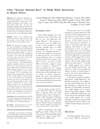 Using "Socially Assigned Race" to Probe White Advantages in Health Status Using "Socially Assigned Race" to Probe White Advantages in Health Status 
SCHOLARLY ARTICLE - Camara Phyllis Jones, et al., Ethnicity & Disease, Volume 18, 2008 Investigates the impacts of racism on health as documented by the health advantages of being perceived by others as "White," even if you self-identify with a non-White group. |
 |
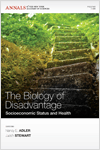 Using team science to address health disparities: MacArthur network as case example Using team science to address health disparities: MacArthur network as case example 
Nancy E. Adler and Judith Stewart In this paper, the director and the administrator of the MacArthur Network on Socioeconomic Status and Health reflect on the evolution of the network. Against the backdrop of the science of “team science,” they describe the history and process of the network including the forging of a group agenda, the development of a creative, productive group working style, and the outcomes arising from these processes. |
 |
 Violence Ages Children's DNA, Shortens their Chromosomes Violence Ages Children's DNA, Shortens their Chromosomes 
ARTICLE from USA Today, 2012 According to a new study in Molecular Psychiatry, violence leaves long-term scars on children's bodies, altering their DNA and causing changes that are equivalent to seven to 10 years of premature aging. Scientists measured this cellular aging by studying the ends of children's chromosomes, called telomeres. |
 |
 Waking Up from the American Dream: Meritocracy and Equal Opportunity Are Fading Fast Waking Up from the American Dream: Meritocracy and Equal Opportunity Are Fading Fast 
EDITORIAL by Aaron Bernstein, Business Week Magazine, 2003 Dead-end jobs and the high cost of college could be choking off upward mobility... |
 |
 What If We Were Equal? A Comparison Of The Black-White Mortality Gap In 1960 And 2000 What If We Were Equal? A Comparison Of The Black-White Mortality Gap In 1960 And 2000 
SCHOLARLY ARTICLE by David Satcher, et al., Health Affairs, 2005 The United States has made progress in decreasing the black-white gap in civil rights, housing, education, and income since 1960, but health inequalities persist. We examined trends in black-white standardized mortality ratios (SMRs) for each age-sex group from 1960 to 2000. The black-white gap measured by SMR changed very little between 1960 and 2000 and actually worsened for infants and for African American men age thirty-five and older. In contrast, SMR improved in African American women. Using 2002 data, an estimated 83,570 excess deaths each year could be prevented in the United States if this black-white mortality gap could be eliminated. |
 |
 What the Federal Government Can Do About the Nonmedical Determinants of Health What the Federal Government Can Do About the Nonmedical Determinants of Health 
SCHOLARLY ARTICLE, Nicole Lurie MD, Health Affairs, 2002 Growing recognition that the acute health care delivery system contributes proportionally less to health when compared with environment and behavior has focused scholars and public health experts on the need to address nonmedical determinants of health. This paper outlines some steps that the U.S. government can take to address these factors and describes some of the challenges involved. Actions that can be undertaken now are increased education and leadership,development of mechanisms to further collaboration among sectors,expanded monitoring and reporting on nonmedical determinants, and developing new knowledge about how these factors affect health and successful interventions to address them. |
 |
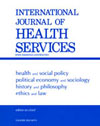 What We Mean by Social Determinants of Health What We Mean by Social Determinants of Health 
SCHOLARLY ARTICLE, Vicente Navarro, International Journal of Health Services, This article analyzes the changes in health conditions and quality of life in the populations of developed and developing countries over the past 30 years, resulting from neoliberal policies. The article concludes with a critical analysis of the WHO report on social determinants of health, applauding its analysis and many of its recommendations, but faulting it for ignoring the power relations that shape these social determinants. It is not inequalities that kill people, as the report states; it is those who are responsible for these inequalities that kill people.richard mille replica |
 |
 What's the Economy for, Anyway? What's the Economy for, Anyway? 
ESSAY by John de Graaf
De Graaf, filmmaker, author, and national coordinator of the Take Back Your Time campaign, questions the heavy focus in the U.S. during recent decades on increasing GDP at the expense of our health and overall quality of life.
|
 |
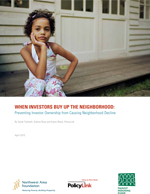 When Investors Buy Up The Neighborhood When Investors Buy Up The Neighborhood 
A report from PolicyLink "When Investors Buy Up the Neighborhood: Strategies to Prevent Investor Ownership from Causing Neighborhood Decline" describes three dozen strategies communities can use to reclaim foreclosed properties, encourage positive reinvestment, and replicas relojes stabilize their neighborhoods. The study also details how many of these approaches are already at work in Minnesota and across the country. |
 |
 When the Bough Breaks - Transcript (pdf) When the Bough Breaks - Transcript (pdf) 
UNNATURAL CAUSES, Episode 2 African American infant mortality rates remain twice as high as for white Americans. Black mothers with graduate degrees have as many low birth-weight babies as white women who haven’t finished high school. How does the chronic stress of racism over the life course become embedded in our bodies and increase risks?
|
 |
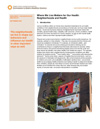 Where We Live Matters for Our Health: Neighborhoods and Health Where We Live Matters for Our Health: Neighborhoods and Health 
REPORT by the RWJF Commission to Build a Healthier America, Oct 2008 This issue brief examines the current state of knowledge about neighborhoods and their links with health, exploring the following questions:
• How could neighborhoods affect health?
• Are features of places really that important for health—or should we focus primarily on the individuals who live in them?
• Do all Americans have the opportunity to live in a healthy neighborhood?
• Could public and private policies improve neighborhoods in ways likely to improve America’s health?
The brief also includes several examples of public, private and joint public-private initiatives intended to make neighborhoods healthier places to live, learn and play. |
 |
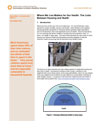 Where We Live Matters for Our Health: The Links Between Housing and Health Where We Live Matters for Our Health: The Links Between Housing and Health 
REPORT by the RWJF Commission to Build a Healthier America, Oct 2008
This issue brief focuses on three important and inter-related aspects of residential housing and their links to health: the physical conditions within homes; conditions in the neighborhoods surrounding homes; and housing affordability, which not only shapes home and neighborhood conditions but also affects the overall ability of families to make healthy choices. |
 |
Why Being a Leader is Less Stressful than Following 
ARTICLE by Maia Szalavitz, TIME Health & Family, September 26, 2012
Research increasingly suggests that it’s actually people lower down on the social scale — not those in leadership positions at the top — who suffer the worst health effects of stress. Now a new study of military officials and government richard mille replica staffers at a Harvard executive-training program confirms these findings, showing that as people climb the organizational rungs, their stress hormone levels and anxiety typically go down.
|
 |
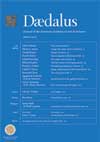 Why Justice is Good for Our Health: The Social Determinants of Health Inequalities Why Justice is Good for Our Health: The Social Determinants of Health Inequalities 
SCHOLARLY ARTICLE by Daniels , Kennedy , and Kawachi, Daedalus, 1999 This article considers questions such as: "Is every health inequality that results from unequally distributed social goods unjust? If there is an irreducible health gradient across socioeconomic groups, does that make the very existence of those inequalities unjust? Alternatively, are some health inequalities the result of acceptable trade-offs?"
A subscription is required to read this article online. |
 |
| « Prev 1 | 2 | 3 | 4 | 5 | 6 | 7 | 8 | 9 | 10 | 11 | 12 Next » |
|




